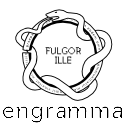
Aby Warburg
Nato ad Amburgo da un’importante famiglia ebraica di banchieri, Aby Warburg (1866-1929) fin dagli studi universitari a Bonn concentra i suoi interessi sulla storia dell’arte, l’archeologia, l’antropologia, la filosofia e la storia delle religioni. Il suo primo viaggio a Firenze tra 1888 e 1889 segna l’inizio di un rapporto privilegiato con l’arte e la cultura italiana. In una frase sintetizzerà così la sua biografia: “Ebreo di sangue, amburghese di cuore, d’animo fiorentino”. >>
Aby Warburg
Born into a prominent Jewish banking family in Hamburg, Aby Warburg (1866–1929) studied art history, archaeology, anthropology, philosophy and the history of religions at the University of Bonn. His first trip to Florence in 1888–1889 marked the beginning of a privileged relationship with Italian art and culture. He summed up his biography in a single sentence: ‘Jew by birth, Hamburger at heart, Florentine in spirit’. >>

L’Atlante Mnemosyne
L’Atlante intitolato alla memoria – Bilderatlas Mnemosyne – è l’ultimo progetto di Aby Warburg: una serie di tavole con montaggi di immagini in cui si possono visualizzare i meccanismi di trasmissione e tradizione di temi e figure dall’antichità – orientale e greco-romana – fino all’attualità, con particolare riguardo alla ripresa formale dai modelli di moti, gesti, posture e schemi iconografici. >>
The Mnemosyne Atlas
The Atlas dedicated to memory, the Bilderatlas Mnemosyne, was Aby Warburg’s final project: a series of panels with pictorial collages visualising the mechanisms of transmission and tradition of themes and figures from antiquity—both Eastern and Greco-Roman—to modern times. Particular attention was paid to the formal revival of patterns of movement, gestures, postures and iconographic schemes. >>

